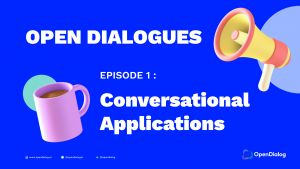Conversational AI: A Supplement, Not a Replacement
There’s a growing notion that forms should be replaced with Conversational AI. But is that really necessary? Forms have stood the test of time—they work, they’re familiar, and they provide structured inputs that businesses rely on.
However, forms also have dead angles—moments where users hesitate, get confused, or drop off without providing valuable feedback. This is where Conversational AI Agents fill the gaps, guiding users through the process without forcing them to switch to a full chat experience.
The Hidden Cost of Form Abandonment
A major challenge with forms is unknown churn—users who leave because they don’t know how to proceed. Traditional forms don’t allow for real-time clarification, leading to misinterpretation, lost conversion or subsequent costs.
Example: Life Insurance Applications
A customer filling out a medical questionnaire might see this question:
“Have you been hospitalized in the past 5 years?” (Yes/No)
They might wonder:
- “I went to the ER for a day—does that count?”
- “Is giving birth in a maternity ward considered hospitalization?”
Many users, unsure how to answer, might:
❌ Abandon the application
❌ Guess an answer, risking policy invalidation
❌ Call customer support, increasing operational costs
In turn, in order to unequivocally settle a claim or refuse payment in case of false declarations, the onus is on the insurance organisation to prove that the medical questions as they were asked were precise. Proving the preciseness of a question can be difficult, as well as reducing its propensity for misinterpretation.
A conversational agent, embedded in the form based on hover behaviour or back-and-forth radio button selection from the user indicating hesitation about a question, could offer just-in-time guidance:
“Hospitalization typically refers to an overnight stay. In the policy you are applying for, ER visits and maternity stays are not considered hospitalisation. Do you feel equipped to answer this question correctly?”
This reduces drop-offs, ensures accurate responses, and improves user trust in the application process.
Additionally, by providing the opportunity to clarify questions and get contextual information upon completion of the form, the insurance company makes the form more precise, and less prone to misinterpretation.
Example: Software Sign-Ups
A SaaS platform sign-up process requires users to provide the following information via a small sign-up form::
- Name
- Company Name
- Role
- Work Email (Required)
Jake, a startup founder in stealth mode, only has a personal email. Unsure if he can proceed, he abandons the form.
A Conversational AI Agent, triggered when the error message shows up, could have answered his question:
“No company email yet? Feel free to get in touch with our customer success team, and we will get things sorted for you.”
This small interaction could turn a lost user into a customer.
UI Considerations: AI Beyond the Chat Bubble
Traditionally, Conversational AI has lived in a chat widget—but it becomes even more powerful if it can adhere to the principle of proximity: meeting the user where they are in your application or webpage.
📌 Inline guidance to form fields
📌 Triggered by user behavior (e.g., hesitation, hovering, or exiting)
📌 Integrated seamlessly into existing UI without disrupting workflows
With tools like OpenDialog’s ChatUI, businesses can design AI interactions that match their UX needs, ensuring a non-intrusive, context-aware experience, thus enhancing the key metrics that matter when it comes to form completion:
- Completion rate = Completed forms / Started forms
- Completion time = How long users take to finish form completion
- Churn = The number of users that drop off during form completion
- One-try submissions = % of users who submit without errors
This hybrid approach boosts usability while preserving structured data collection.
Experience the future of
AI- driven UI today!
Explore OpenDialog’s ChatUI SDK and reimagine Conversational AI beyond the chatbox.


